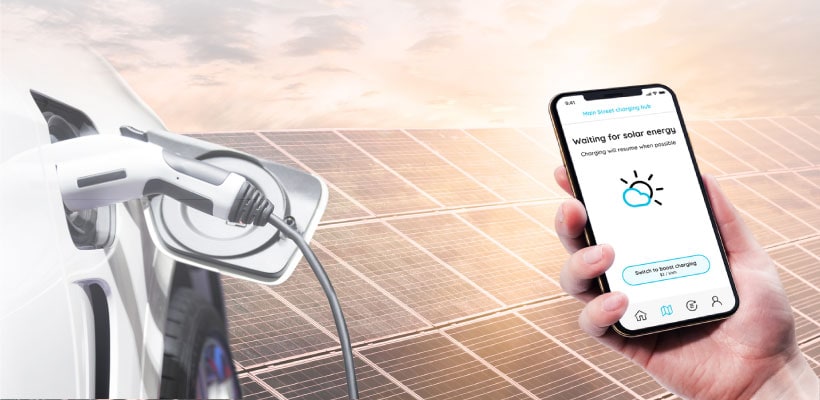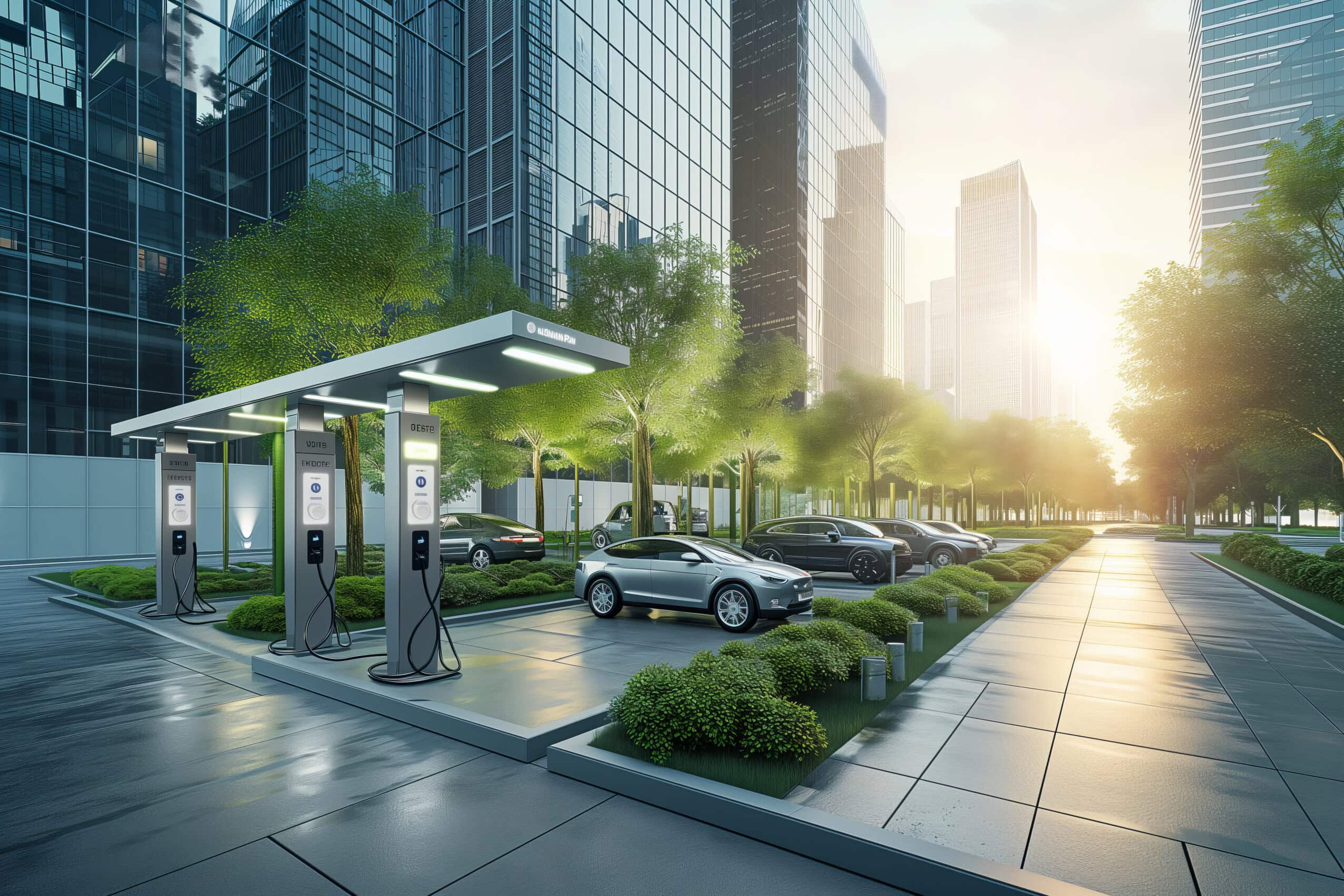As electric vehicles (EVs) continue to gain popularity worldwide, the demand for efficient and effective charging infrastructure has skyrocketed. For Charge Point Operators (CPOs) and other stakeholders, understanding the nuances between EV charging Level 1, 2, 3 chargers is crucial for making informed decisions. In this blog post, we’ll break down the key differences between these three charging levels, explore their costs, and discuss the interchangeability of EV chargers. By the end of this post, you’ll know which charging solution fits your business best.
What Are EV Charging Level 1, 2, 3?
Before diving into the comparisons, it’s essential to understand what we mean by “charging levels.” We categorize EV chargers into EV charging Level 1, 2, 3 based on the power they deliver to the vehicle and the speed at which they can charge an electric vehicle’s battery. These levels are:
- Level 1 Charging
- Level 2 Charging
- Level 3 Charging (DC Fast Charging)
Level 1 Charging: The Basics
Level 1 chargers represent the most basic type of EV charger. They use a standard 120-volt AC outlet, which is commonly found in single-family homes. This charging level provides the slowest charging speed, making it best suited for overnight charging at home.
Charging Speed:
Level 1 chargers typically deliver 2 to 5 miles of range per hour of charging. This slow pace means that a full charge can take anywhere from 8 to 24 hours, depending on the size of the vehicle’s battery.
Cost:
- Charger Cost: Level 1 charging is often just an extension cord plugged into an outlet, so the cost is often simply the installation cost of a new outlet.
- Installation Cost: Since Level 1 chargers use standard home outlets, no additional installation costs are typically required.
- Operating Cost: Level 1 chargers are energy-efficient and have minimal operating costs, as they use household electricity. However, they typically do not offer billing or more advanced energy management functionality.
Ideal Use Cases:
- Residential Charging: Level 1 chargers are ideal for EV owners who drive relatively short distances daily and have access to overnight charging.
- Small Fleet Operations: Businesses with small fleets that have downtime overnight with very long dwell times may also find Level 1 charging sufficient.
Level 2 Charging: The Versatile Option
Level 2 chargers provide a significant step up from Level 1 in terms of charging speed and power. These chargers operate on a 240-volt AC circuit, similar to the power used by household appliances like dryers or ovens. Level 2 charging is commonly found in multi-family residential, workplace, and public charging stations.
Charging Speed:
Level 2 chargers deliver 10 to 60 miles of range per hour of charging, depending on the vehicle and charger specifications. This allows most EVs to achieve a full charge in 4 to 8 hours.
Cost:
- Charger Cost: Level 2 chargers typically cost between $600 and $2,500, depending on the brand, features, and power output.
- Installation Cost: Installing a Level 2 charger often requires an electrician to set up a dedicated 240-volt circuit. Depending on the complexity and distance of the cable run, installation costs range from $200 to $1,200.
- Operating Cost: While operating costs are higher than Level 1 due to increased power usage, Level 2 chargers are still relatively energy-efficient and can be programmed to charge during off-peak hours to reduce electricity costs. In addition, Level 2 chargers could be “smart” connected devices, enabling visibility, reporting, and energy management capabilities.
Ideal Use Cases:
- Residential Charging: Level 2 is popular for multi-unit dwelling home installations, especially for EV owners who need faster charging or drive longer distances. In apartment buildings, L2 chargers strike the perfect balance of functionality such as revenue collection, driver authentication, and reporting with cost.
- Workplace Charging: Providing Level 2 charging at workplaces allows employees to top off their batteries during the workday. It is also important for employers to be able to have visibility and control of the charging usage and keep energy bills low.
- Public Charging Stations: Level 2 chargers are commonly installed in public areas such as shopping centers, parking garages, and municipal lots, providing a convenient charging option for EV drivers on the go.
Level 3 Charging (DC Fast Charging): The High-Speed Solution
Level 3 chargers, also known as DC Fast Chargers, are the most powerful and fastest EV chargers available. Unlike Level 1 and Level 2 chargers, which provide AC power to the vehicle’s onboard charger, Level 3 chargers deliver DC power directly to the battery, bypassing the onboard charger and significantly reducing charging time.
Charging Speed:
Level 3 chargers can deliver 60 to 100 miles of range in just 20 minutes, making them ideal for quick stops during long road trips. Charging times vary based on the vehicle’s battery size and the charger’s power output.
Cost:
- Charger Cost: Level 3 chargers are significantly more expensive, with prices ranging from $30,000 to $150,000 per unit, depending on the power capacity and features.
- Installation Cost: Installing a Level 3 charger involves substantial costs due to the need for high-voltage electrical infrastructure. Installation costs can range from $10,000 to $50,000, depending on the site and power requirements.
- Operating Cost: The high power output of Level 3 chargers results in higher operating costs, particularly during peak electricity demand periods. However, these chargers can often be monetized through usage fees, offsetting some of the operating expenses.
Ideal Use Cases:
- High-Traffic Public Charging Stations: Level 3 chargers are essential for highway rest stops, gas stations, and other locations where drivers need a fast recharge during long trips.
- Fleet Charging: Companies with large EV fleets that need rapid turnaround times between shifts or deliveries benefit from Level 3 charging.
- Urban Charging Hubs: In dense urban areas where parking space is limited, Level 3 chargers can maximize the number of vehicles charged in a day by minimizing charging time.
Cost Comparison: Level 1 vs. Level 2 vs. Level 3 Chargers
When considering the cost of EV chargers, it’s important to weigh both the upfront expenses and the long-term operating costs. Here’s a quick comparison:
| Charging Level | Charger Cost | Installation Cost | Operating Cost |
|---|---|---|---|
| Level 1 | $300 – $600 | Minimal to None | Low |
| Level 2 | $600 – $2,500 | $200 – $1,200 | Moderate |
| Level 3 | $30,000 – $150,000 | $10,000 – $50,000 | High |
Key Takeaways:
- Level 1 charging is the most affordable but offers the slowest charging speed, making it suitable for residential and small-scale use where no driver authentication, billing, or energy management of charging is required.
- Level 2 charging strikes a balance between cost and speed, making it the most versatile option for various applications.
- Level 3 charging is ideal for high-demand situations where charging speed is critical, but it comes with significant costs.
Are EV Chargers Interchangeable?
One common question among EV charger operators and installers is whether EV chargers are interchangeable. The answer depends on several factors, including the charging level, the vehicle’s compatibility, and the charger’s standard.
Level 1 and Level 2 Chargers:
- Compatibility: Most Level 1 and Level 2 chargers use a standard connector known as the SAE J1772 (or Type 1) in North America and Japan or the Type 2 connector in Europe. This standardization means that any EV equipped with a corresponding inlet can use any Level 1 or Level 2 charger. For example, a Nissan Leaf, Chevrolet Bolt, and Tesla (with an adapter) can all use the same Level 2 charging station.
- Interchangeability: Since most Level 1 and Level 2 chargers adhere to the same standards, users can generally interchange them across different vehicles. However, some EVs, like Tesla vehicles, require an adapter to use non-Tesla chargers.
Level 3 Chargers (DC Fast Chargers):
- Compatibility: Level 3 charging is where compatibility becomes more complex. There are three main types of connectors for DC fast charging: CHAdeMO, CCS (Combined Charging System), and Tesla’s Supercharger. While the CCS connector is becoming the dominant standard in many regions, some vehicles may only support CHAdeMO or require an adapter to use a CCS charger.
- Interchangeability: Level 3 chargers are not as universally interchangeable as Level 1 and Level 2 chargers due to differences in connector types and standards. It’s crucial for charge point operators to ensure that their DC fast charging stations are equipped with the appropriate connectors to serve a broad range of vehicles.
The Importance of Open Standards:
For businesses and operators, choosing chargers that support open standards, such as OCPP (Open Charge Point Protocol), ensures greater compatibility and future-proofing. OCPP-compliant chargers can communicate with a variety of back-end systems, making it easier to manage and scale charging networks.
Choosing the Right Charger for Your Business
Selecting the appropriate EV charger level depends on several factors, including your business model, customer needs, and budget. Here are some considerations:
- For Residential Installations: Level 1 or Level 2 chargers are usually sufficient. Level 2 is recommended for faster charging and future-proofing, especially as battery sizes increase.
- For Workplace Charging: Level 2 chargers are ideal, offering a good balance between charging speed and cost. They provide employees with a convenient way to charge during the workday.
- For Public Charging Stations: A mix of Level 2 and Level 3 chargers can serve a broader range of customers. Level 3 chargers are essential for high-traffic locations with high utilization where quick turnarounds are needed.
- For Fleet Operators: Level 2 chargers are suitable for fleets with predictable charging schedules, while Level 3 chargers are necessary for fleets requiring fast turnaround times.
Conclusion: Optimizing Your EV Charging Infrastructure
Understanding the differences between Level 1, Level 2, and Level 3 chargers is essential for anyone involved in the EV charging industry. Each charging level has its strengths and applications, and the choice you make will impact your operational efficiency, customer satisfaction, and long-term profitability.
At Wevo Energy, we specialize in providing innovative EV charging solutions that meet the diverse needs of charge point operators, EV charging service providers, and EV infrastructure providers. Whether you are expanding your network or optimizing operations, understanding the differences between EV charging Level 1, 2, 3 is critical for success. EV charging management software can help you achieve your goals.
By carefully considering your options and leveraging the right technology, you can ensure that your charging network is both efficient and future-proof, keeping pace with the growing demand for electric vehicles.

